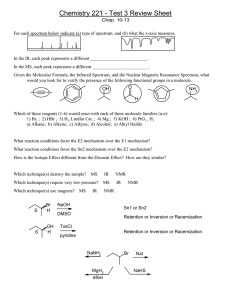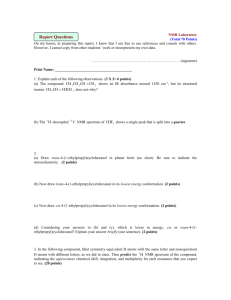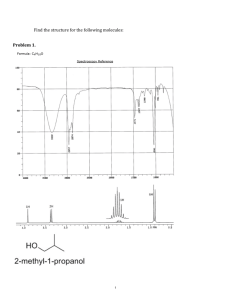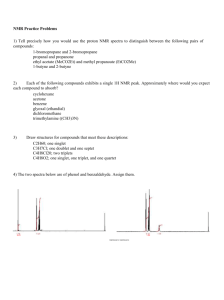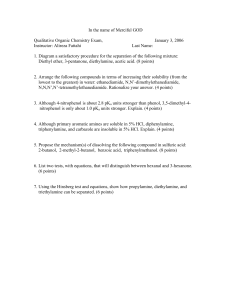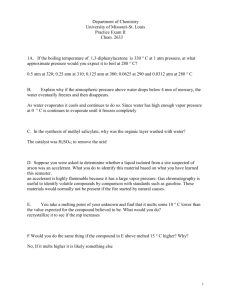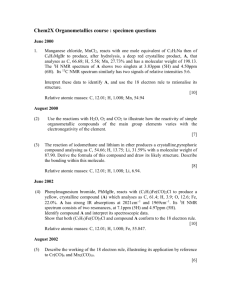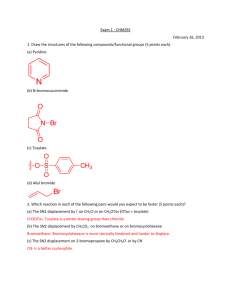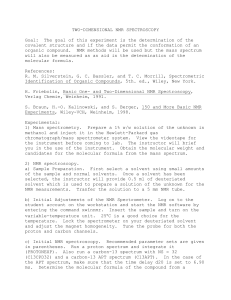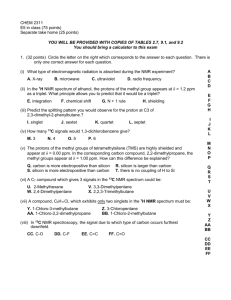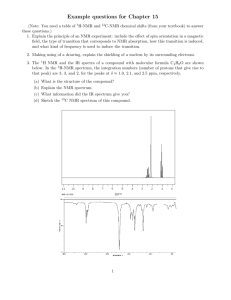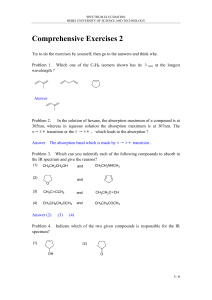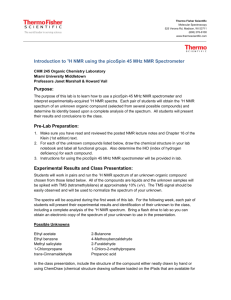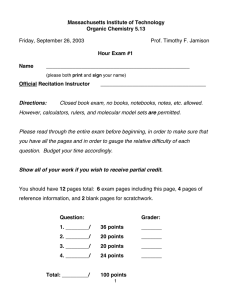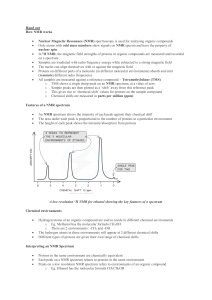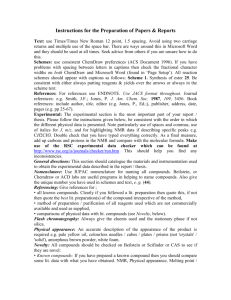Spring `09 exam 1
advertisement
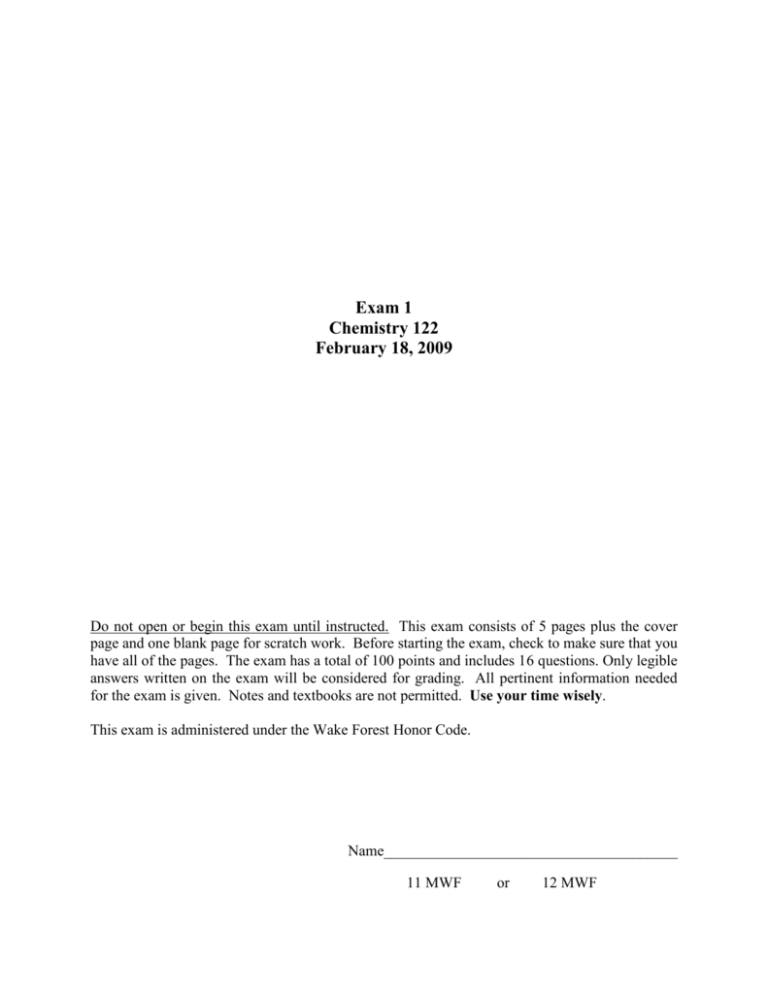
Exam 1 Chemistry 122 February 18, 2009 Do not open or begin this exam until instructed. This exam consists of 5 pages plus the cover page and one blank page for scratch work. Before starting the exam, check to make sure that you have all of the pages. The exam has a total of 100 points and includes 16 questions. Only legible answers written on the exam will be considered for grading. All pertinent information needed for the exam is given. Notes and textbooks are not permitted. Use your time wisely. This exam is administered under the Wake Forest Honor Code. Name_______________________________________ 11 MWF or 12 MWF 1. (8 points, 4 each) Provide IUPAC accepted names for the following compounds. 2. (6 points, 2 each) What functional group is present in each of the following molecules? 3. (4 points, 2 each) Provide a molecule that contains the indicated functional group. Do not include multiple functional groups in the molecules you draw. alkene ketone 4. (6 points) Determine the absolute configuration of any stereocenter(s) in the following molecule. Show your reasoning for full credit. 1 5. (8 points) Draw the most stable conformation of cis-4-ethyl-1-isopropylcyclohexane. Show ALL of the bonds to hydrogen and label every bond (12 of them) as either axial or equatorial. 6. (6 points) What is the enantiomeric composition of a mixture that has a specific rotation of +88 degrees and has an enantiomeric excess of 40%. 7. (4 points) Provide a Lewis structure of the most important resonance structure of CH3CN. Show all electrons. 8. (4 points) Assign any formal charges in the following structure. 9. (3 points) Provide a minor but important resonance contributor for the following compound. 2 10. (16 points, 4 each) Determine if each of the following pairs of compounds represent enantiomers, diastereomers, constitutional isomers, or two molecules of the same compound. 11. (3 points, 1 each) Circle any of the following nuclei that are NMR active. 12 C 31 P 2 H 12. (2 points) What portion of the electromagnetic spectrum induces the nuclear spin flip that occurs to generate an NMR spectrum? 13. (2 points) What portion of the electromagnetic spectrum enhances the stretching and bending of bonds? 3 14. (8 points) Match the given IR spectrum to one of the following compounds. Label at least 3 absorbance bands (or absence thereof) in the IR that allow you to conclusively identify the compound. 15. (10 points) Predict the integration and multiplicity of each signal that would be observed in the 1H NMR of the following compound. Do so by first identifying and labeling equivalent protons (A, B, C, etc.). Then complete the chart. Which signal will appear most downfield? Proton Label Integration Splitting Pattern 4 16. (10 points) Determine the structure of the following C10H12O2 compound. Partial credit will be awarded if you solve pieces of the final structure and show your reasoning. (The next page is blank.) Place your final answer in the box. 13C 1H NMR (, ppm): 11, 22, 67, 128, 130, 131, 133, 167 NMR: 3 2 3 2 2 (sextet) IR: 5 This page left intentionally blank for #16. 6
